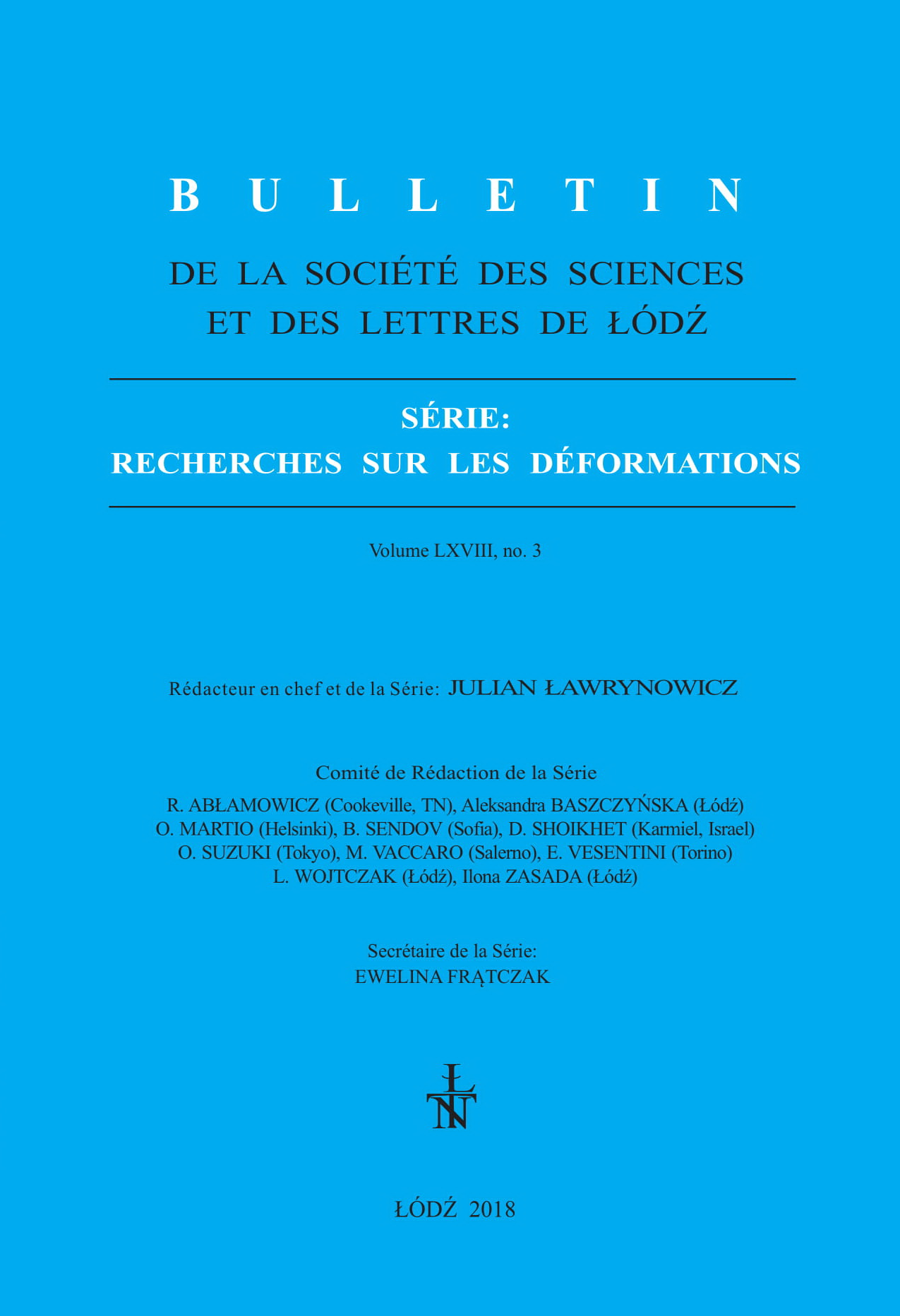Metoda generowania archimedesowych trójkątnych operatorów połączeniowych
DOI:
https://doi.org/10.26485/0459-6854/2018/68.3/5Słowa kluczowe:
T-normy, S-normy, T-operatory, generatory połączeńAbstrakt
Trójkątne operatory Archimedesowe stanowią podstawę do opracowywania, analizy i projektowania systemów rozmytych. Są generowane przez proste, monotoniczne, jednoznaczne i ciągłe funkcje. Analizowane są podstawowe zestawy połączeń logicznych systemów rozmytych. Pokazano, ˙ze są one podzielone na warunkowe i algebraiczne. Opisano dobrze znane metody generowania trójkątnych operatorów Archimedesowych. Wyodrębniono ograniczenia charakterystyk funkcjonalnych tak generowanych operatorów. Aby rozszerzyć charakterystyki operatorów, stworzono metodę generowania, która umożliwia budowanie nowych sparametryzowanych operatorów. Podano przykłady konstruowania zarówno nowych operatorów, jak i już znanych. Opisana tendencja zmiany charakterystycznej hiperppowierzchni, którą buduje nowy operator.
Bibliografia
L. A. Zadeh, Fuzzy sets, Inform. Contr. 8 (1965), 338–353.
H. T. Nguen, E. A. Walker, A first course in fuzzy logic, Chapmen & Hall/CRC, Roca Raton, 2006.
C. E. Alsina, E. Trillas, L. Valverde, On some logical connectives for fuzzy theory, J. Math. Anal. Appl. 93 (1983), 15–22.
J. Dombi, A general class of fuzzy operators, the De-Morgan class of fuzzy operators and fuzziness induced by fuzzy operators, Fuzzy Sets and Systems 8 (1982) 149–163.
G. A. Klir, T. A. Folger, Fuzzy sets, uncertainty and information, Prentice-Hall, Englewood Cliffs, NJ, 1988.
D. Dubois, H. Prade, New results about properties and semantics of fuzzy settheoretic operators, in: Fuzzy Sets, Wang and Chang, Eds. New York: Plenum Press, 1980, 59–75.
S. Roychowdhury, B. H. Wang, Composite generalization of Dombi class and a new family of T-operators using additive-product connective generator, Fuzzy Sets Syst. 66 (1994), 329–346.
K. Menger, Statistical metric spaces, Proc. Nat. Acad. Sci. 28, (1942), 535–537.
G. A. Klir, B. Yang. Fuzzy sets and fuzzy logic, Prentice-Hall, New Jersy, 1995.
B. Schweizer, A. Sklar A., Associative functions and abstract semi groups, Publicationes Mathematicae Debrecen 40 (1963), 69–81.
C. Alsina, M. J. Frank, B. Schweizer. Associative functions: triangular norms and copulas. Hackensack, World Scientific, 2006.
E. P. Klement,R. Mesia,E. Pap. Triangular norms. Kluwer Academic Publishers. Dordrecht- Boston-Londod. 2000.
R. R. Yager, On a general class of fuzzy connectives, Fuzzy Sets Syst. 4 (1980), 235–242.
J. C. Fodor, Contrapositive symmetry of fuzzy implications, Fuzzy Sets Syst. 69 (1995), 141-156.
D. Dubois, H. Prade, A review of fuzzy set aggregation connectivies, Inform.Sci. 36, 85–121.
H. Hamacher, Uber logische verknunpfungenn unssharfer Aussagen und deren Zugenhorige Bewertungsfunktione, in: Progress in Cybernatics and Systems Research, Trappl, Klir, Riccardi, Eds. Washington, DC: Hemisphere, 3 (1978), 276–288.
M. J. Frank, On simulataneous associativity of F(x, y) and x + y - F(x, y), Aequationes Math. 19 (1979), 194–226.
J. Aczel, Lectures on Functional Equations and Their Applications. New York: Academic, 1966
R. A. Vorobel, Additive-multiplicative generator of logical connectives in fuzzy systems, Information Extraction and Proces. 45 (121), (2017), 63–68.
R. Vorobel, Methods of triangular norms construction, in: Proceedings of the Int.
Sci. Conf. Modern Problems of Mathematical Modeling, Computational Methods and Information Technologies, 2 -4 March, 2018, Rivne, Ukraine, 151-163.
R. A. Vorobel. Logarithmic image processing, Kyiv: Naukova Dumka, 2012.


